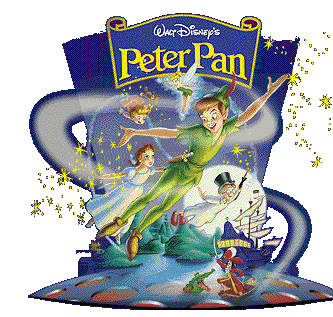

 |
|
 |
Tinkerbell is a jealous pixie. A sprinkle of her pixie dust can make you fly. She turns very spiteful if she suspects that Peter Pan's attentions are diverted to anyone but herself. In Sir James M. Barrie's original play, Tinkerbell is staged as a flying point of light beamed from offstage. Animator Marc Davis' personification of her as a winged pixie with a very womanly figure was widely criticized as too sexually suggestive by Barrie purists, especially after it was rumored that she was modeled after actress Marilyn Monroe. Tink was actually modeled after Margaret Kerry, the actress who performed her live-action reference. After starring in the movie Peter Pan, Tinkerbell went on to a second career as TV hostess for Disney's anthology series ("Disneyland," "Walt Disney Presents," "Walt Disney's Wonderful World of Color," and "The Wonderful World of Disney"), and Tinkerbell still flies through the sky over Disney World every night in the summer above the castle with the evening fireworks.
Peter Pan is the magical boy who won't grow up, and who coax's the three Darling children-Wendy, John, and Michael-to fly to Neverland with him. They come across Captain Hook, and his crew of pirates. The fairy, Tinkerbell, is jealous of Peter Pan giving all his attention to Wendy, and in turm helps Captain Hook. After Peter rescues the Indian princess, Tiger Lily, he must save the Lost Boys, the Darling children, and Tinkerbell.
Walt
planned as early as 1935 to make this film, arranging in 1939 with the
Great Ormond Street Hospital in London (who had the rights to the play
bequeathed by author James M. Barrie) for permission, but it was not until
1949 that production actually began. The voices used in the film
consisted of: Bobby Driscoll (Peter), Kathryn Beaumont (Wendy), Hans Conried
(Captain Hook, Mr. Darling), and Bill Thompson (Mr. Smee). The film
was released in February 5, 1953.
